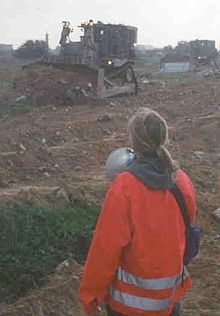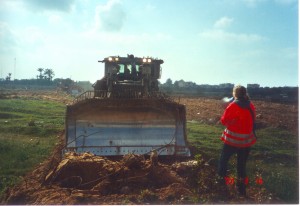Tag: Gaza
-
ISM’s response to the Rachel Corrie verdict
The International Solidarity Movement (ISM) is deeply concerned by the verdict of Judge Oded Gershon that absolved Israel’s military and state of the 2003 murder of American ISM activist Rachel Corrie. Rachel was crushed to death by an Israeli army bulldozer while protesting the demolition of a Palestinian home in the Gaza Strip. Despite the…
-
Gaza activists: #RememberRachel and support #BDS
Palestinians in Gaza support the Corrie family on the eve of the verdict in their lawsuit against Israel over its 2003 killing of their daughter Rachel, as well as divestment from Caterpillar and the global Boycott, Divestment, and Sanctions (BDS) movement.
-
Verdict in Rachel Corrie lawsuit to be announced August 28
22 August 2012 | the Rachel Corrie Foundation, Occupied Palestine The verdict in the civil lawsuit against the State of Israel for the killing of peace activist Rachel Corrie over nine years ago will be announced August 28, 2012, at 9:00 a.m. at the Haifa District Court. Rachel Corrie, a 23-year-old American from Olympia, Washington, was…


